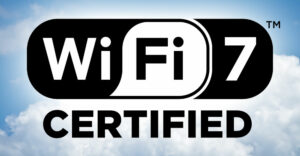
Last week was one hell of a week. We had the formal launch of the Core Wars between Intel and AMD, and a little product called the “iPad” entered the market. My biggest concern, thanks to the Lifeboat Foundation, was the Hadron Collider and whether I’d even wake up today. (Since you are reading this, I’m assuming we woke up today.) Thank goodness much of the related news had to do with April 1st pranks.
Well, the iPad is here. Apple’s handpicked early reviewers have been gushing about it since it launched, and OMG the world looks pretty much the same this week as it did last. My apologies to my friend Don Tennant who is thoroughly sick of the device, but this week I’ll say more about iPad.
I’ll close with my product of the week: a router from Cisco called the “Valet” that borrows heavily from Apple’s lessons in packaging and ease of use to create the first truly family-friendly networking product.
iPad and the Power of Marketing
I’m sure the stores sold out of the iPad over the weekend and the 500,000 that were allowed for preorder have been sold out for some time. Folks have been drooling over this thing for some time now, and I’m with Don in terms of being rather sick of the iDol worship surrounding this device. However my background is marketing, and this launch represents a high point in terms of marketing prowess. Had anyone else brought this device to market, it probably would have been panned and branded a failure.
In terms of hardware, the device isn’t better than anything else in the market at any one thing. Think about it — a netbook is better at productivity and the Web (and TV programming); an iPod is better at music (size); a portable DVD player has access to more movie content; a smartphone is better at communications; and a Kindle is a vastly better e-book reader. Name one thing that the iPad does better than any other top existing device — including an iPod or iPhone.
We actually make jokes about the fact that it is a less capable netbook, an oversized iPod touch, and has a name that connects it to a Maxi-Pad. None of that matters.
Marketing is about changing the opinion of an audience to favor a product. The iPad’s success — and my own projections for sales are between 4 million and 6 million units in calendar 2010 — is largely thanks to excellent marketing that started with the introduction of the product, shaping the way it was seeded, how it was advocated, and how it will be advertised post launch.
The iPad showcases what marketing is capable of, and we don’t get examples like this often.
The iPad Sucks: So What? It’ll Sill Eclipse the Kindle
The funny — well, not so funny for Amazon — thing about the iPad vs. Kindle fight is that from a device perspective, the Kindle is actually closer to a successful Apple consumer offering than the iPad is. What made the iPod great was that the solution (including iTunes) did one thing vastly better than anything else, and that was manage and play a large amount of music. Sony had better-looking players, but they were a pain to use. An ever-larger number of competitive players came to market promising more but never delivering better on that one key thing, which was music.
The Kindle matched or exceeded the initial iPod from packaging to experience (the iPod still needed a Mac or PC, while the Kindle connects wirelessly over 3G to its content sources). The iPad is a jack of all trades but a master of none. The iPad actually looks more like products that tried unsuccessfully to compete with the iPod than it does a traditional Apple offering. What makes it different from those failed offerings is that Apple still controls and assures the user experience.
Yet it likely will pass the Kindle in sales before November, because Apple was more successful at building excitement around its product, and initial reviews are generally pretty positive. Granted, to be an initial reviewer and get a free iPad, you have to show a history of doing positive reviews, but that too is how Apple controls the initial impression of the product and helps assure its success.
Still, I do think more folks likely should have used the “Should I buy an iPad” flowchart that legendary Apple evangelist Guy Kawasaki sent around. I’m already seeing way too much whining from folks who should have known that this device wasn’t for them. By the way, if anyone cares, I’m not replacing my Kindle for the iPad.
Wrapping Up: Waiting for Version 2
There is a reason version 1.0 of the iPad is far from perfect. With the launch of this product, we now move to speculation about the next generation iPad, and it should change a great deal from this 1.0 product based on initial use. Remember that launching a 1.0 product in a new category — and this is far more than an e-book reader and vastly different than a netbook — requires making a huge bet with regard to what the market wants and is not getting with something else. The category may only exist in the minds of the engineers, kind of like netbooks did before they evolved back into notebook computers.
Once a product is out there, you can see how it is actually used, what works and what doesn’t, and get developers working on applications to run on it. This means generation 2 and 3 iPads — assuming generation 1 is successful — will be vastly improved, and by version 3, we likely won’t even remember version 1. The one sure thing that will be changed is the price. It initially is clearly too expensive for most.
In many ways, the iPad is the beginning of something. What and who will eventually most benefit are both in play, but there is no doubt that this was the beginning of something big.
Product of the Week: Cisco Valet Router

A few years ago, a video circulated that showed what would happen if Microsoft got hold of the original pristine iPod packaging. Few knew that this video was created inside Microsoft to make a point that the company rarely got. Well, with the Cisco Valet Router, Cisco clearly got the point, because the package is iPod-pristine, the setup is iPod-easy, and the user experience is iPod-like.
Routers are scary devices for most home owners — hell, they scare me sometimes, and I live tech. This one is plug-and-play easy, and with easy screen menus you can set times that lock your kids off the network, create easy-to-remember router names and guest passwords, and connect new computers by simply inserting a USB stick and clicking on a connection application.
The product costs $100 for the basic version and $150 for the extended range model. This is the easiest router anyone has ever sent me, and I’m using it for guest access on my own home network because I can better secure the network and still allow people on and off without having to locate the manual.
If all products were this easy, there would be vastly more technology in homes and other firms would have customer satisfaction scores similar to Apple’s. Because this is the best emulation of an Apple experience in a non-Apple offering, the Cisco Valet router is my product of the week. A close runner up was the Toshiba TubeTop laptop. Better luck next time, Toshiba!
Rob Enderle is a TechNewsWorld columnist and the principal analyst for the Enderle Group, a consultancy that focuses on personal technology products and trends.






















































